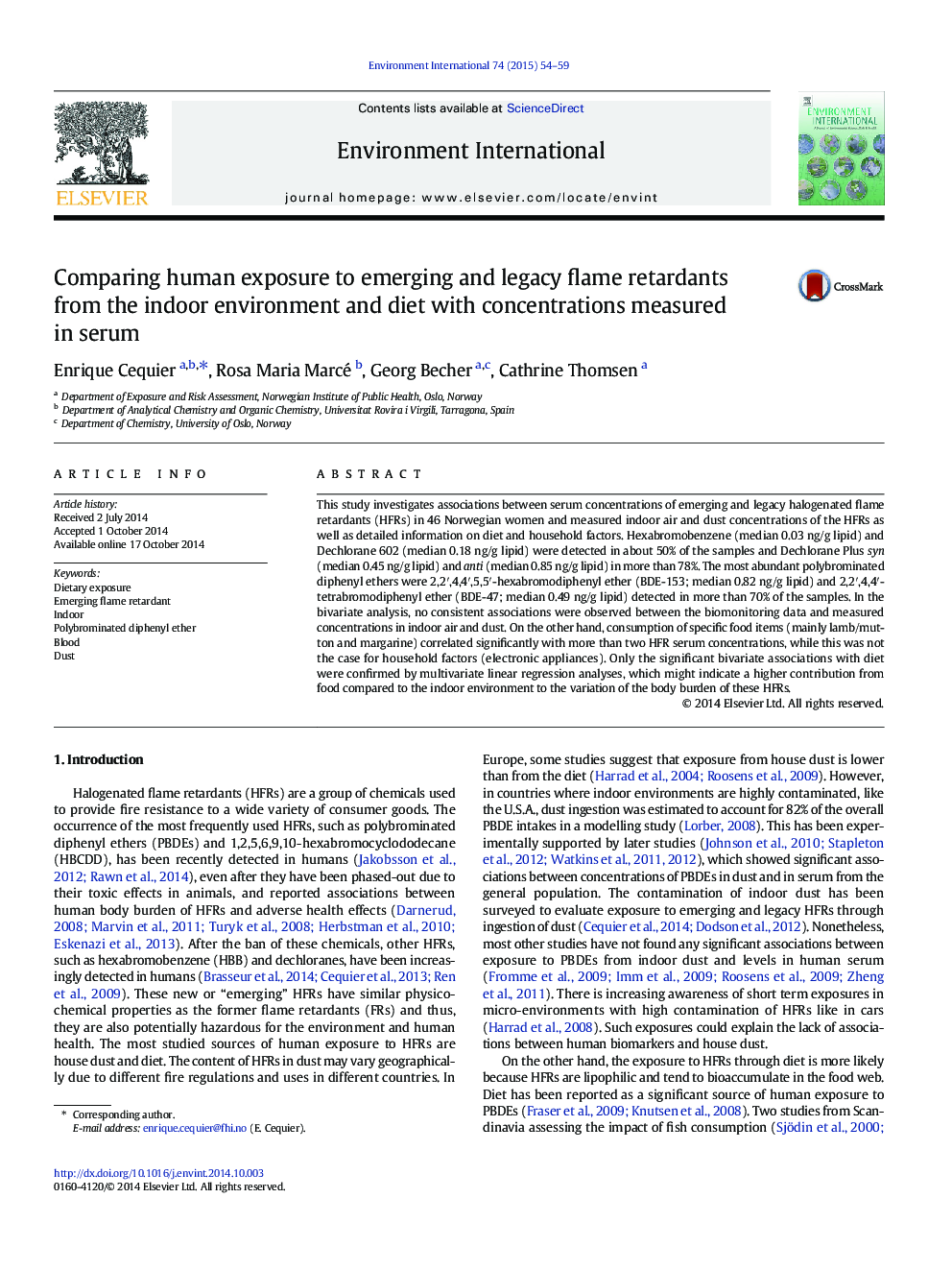| Article ID | Journal | Published Year | Pages | File Type |
|---|---|---|---|---|
| 6313880 | Environment International | 2015 | 6 Pages |
â¢Dechloranes (DP, Dec602 and Dec603) have been measured in human serum.â¢Hexabromobenzene and 1,2-bis(2,4,6-tribromophenoxy)ethane were also found in serum.â¢Bivariate analysis showed lack of associations between HFRs in serum and dust.â¢Multiple regression analyses point to diet as a relevant source of exposure to PBDEs in this Norwegian population.
This study investigates associations between serum concentrations of emerging and legacy halogenated flame retardants (HFRs) in 46 Norwegian women and measured indoor air and dust concentrations of the HFRs as well as detailed information on diet and household factors. Hexabromobenzene (median 0.03Â ng/g lipid) and Dechlorane 602 (median 0.18Â ng/g lipid) were detected in about 50% of the samples and Dechlorane Plus syn (median 0.45Â ng/g lipid) and anti (median 0.85Â ng/g lipid) in more than 78%. The most abundant polybrominated diphenyl ethers were 2,2â²,4,4â²,5,5â²-hexabromodiphenyl ether (BDE-153; median 0.82Â ng/g lipid) and 2,2â²,4,4â²-tetrabromodiphenyl ether (BDE-47; median 0.49Â ng/g lipid) detected in more than 70% of the samples. In the bivariate analysis, no consistent associations were observed between the biomonitoring data and measured concentrations in indoor air and dust. On the other hand, consumption of specific food items (mainly lamb/mutton and margarine) correlated significantly with more than two HFR serum concentrations, while this was not the case for household factors (electronic appliances). Only the significant bivariate associations with diet were confirmed by multivariate linear regression analyses, which might indicate a higher contribution from food compared to the indoor environment to the variation of the body burden of these HFRs.
